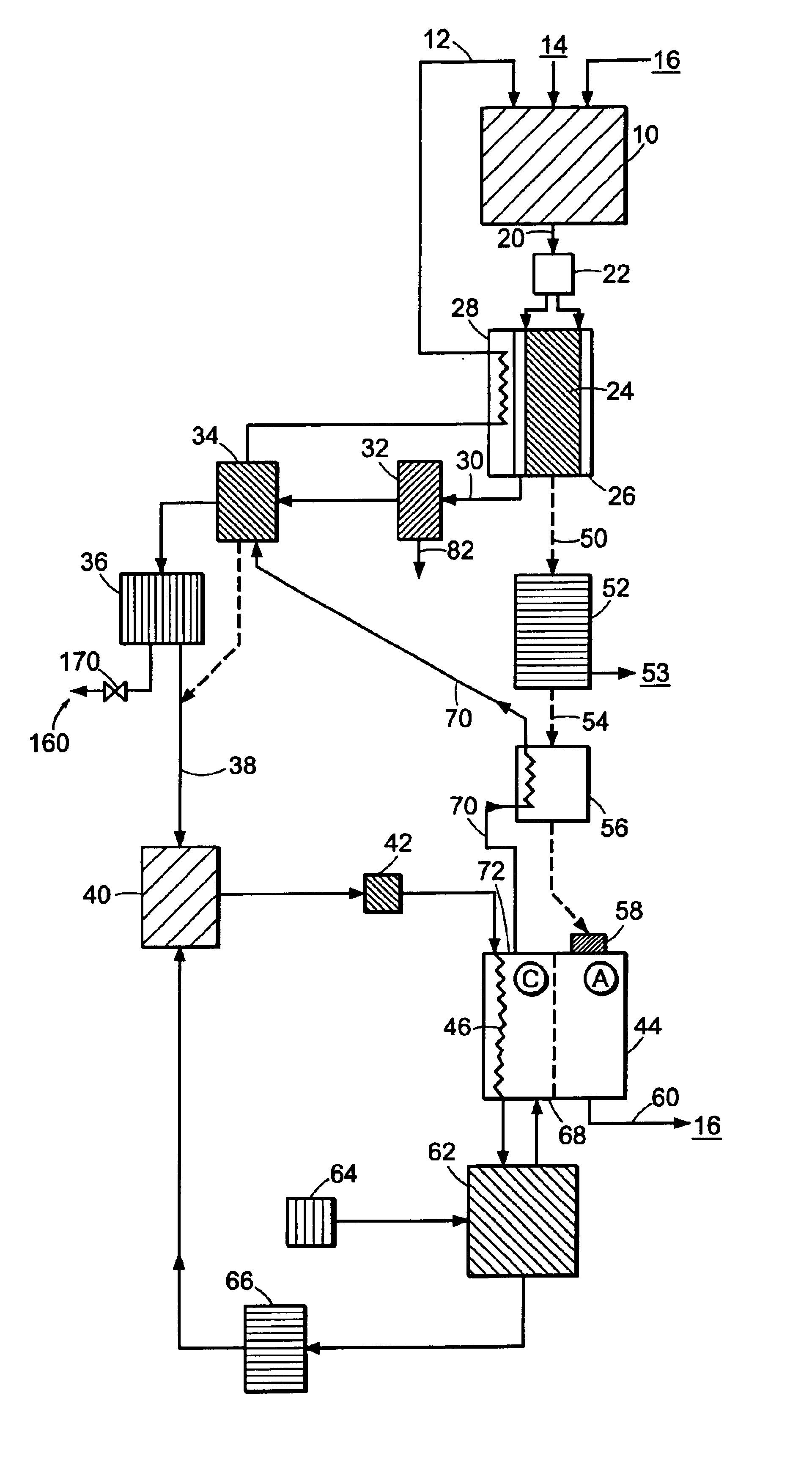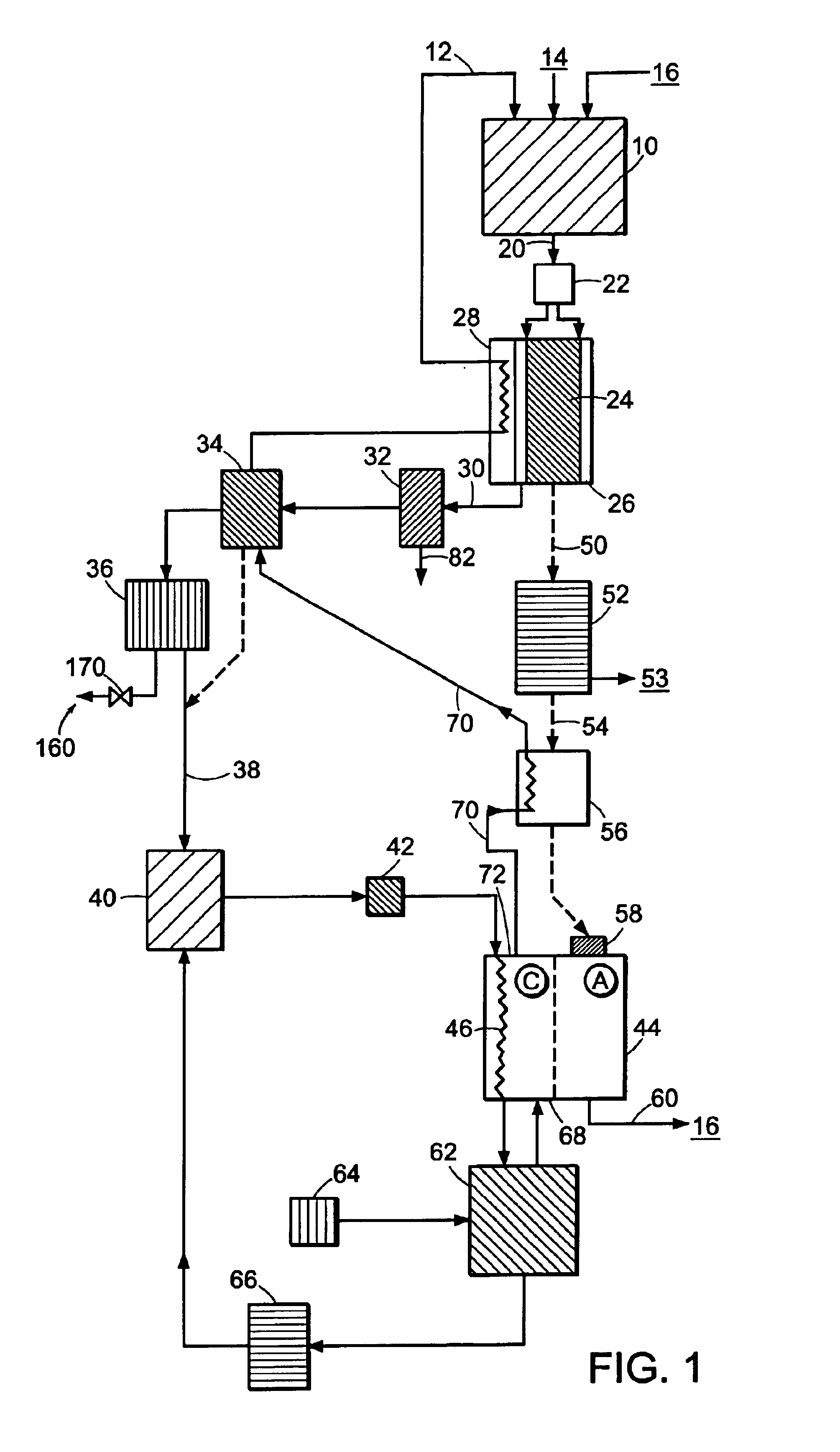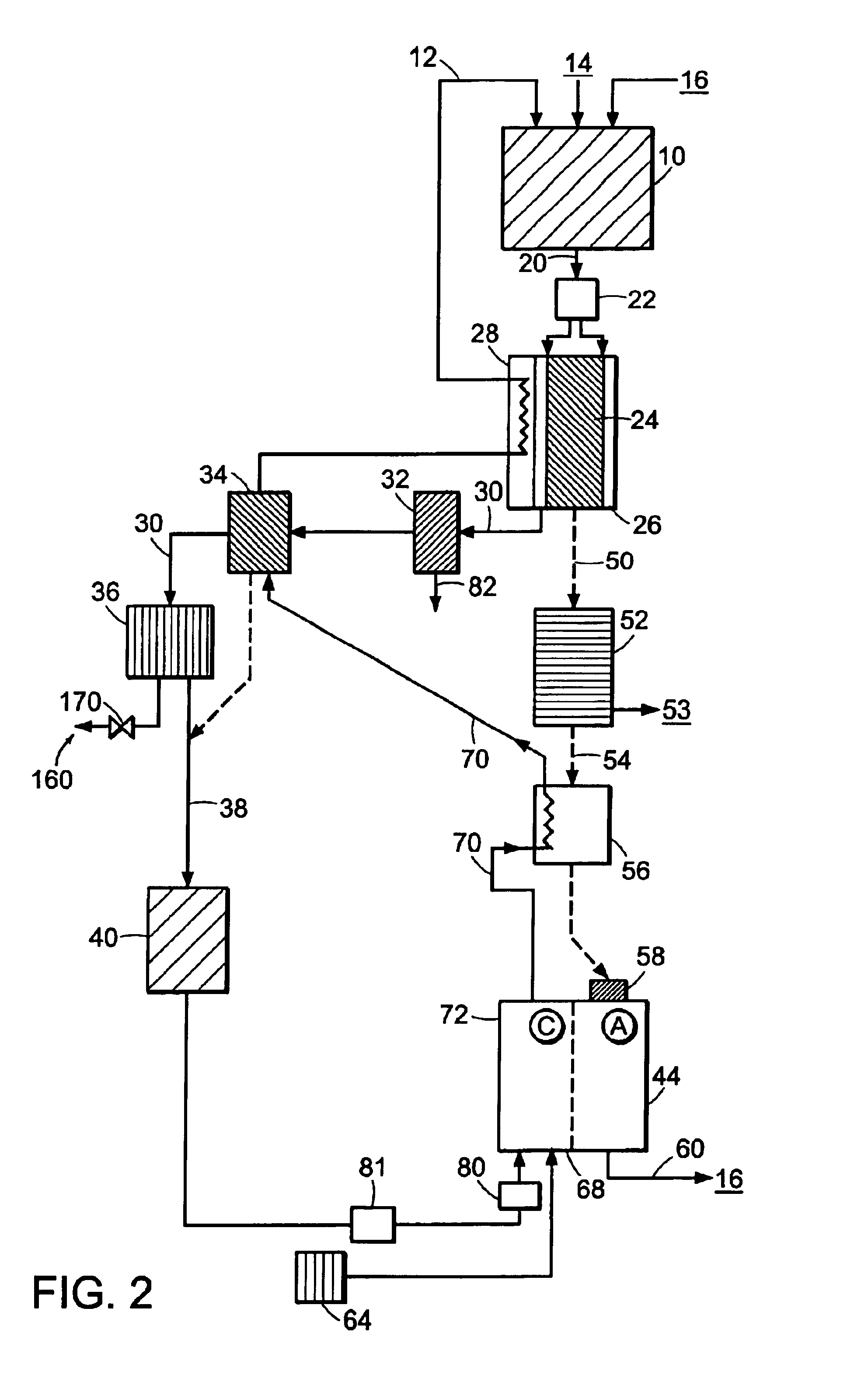High-efficiency fuel cell power system with power generating expander
a fuel cell and power system technology, applied in the direction of cell components, fused electrolyte fuel cells, cell component details, etc., can solve the problems of waste heat generated in conventional low-temperature fuel cells, is notoriously difficult to recapture in a way that produces additional useful power, and the heat rejection temperature of low-temperature fuel cells is much too low to recover energy, so as to improve the overall system efficiency and improve efficiency. , the effect of improving efficiency
- Summary
- Abstract
- Description
- Claims
- Application Information
AI Technical Summary
Benefits of technology
Problems solved by technology
Method used
Image
Examples
first embodiment
[0026]One embodiment of an integrated fuel reformer / fuel cell power system of the invention is schematically illustrated in FIG. 1. A burner 10 receives feeds of air / steam 12, fuel 14 and preferably recycled fuel cell anode exhaust 16, and combusts them to create a hot exhaust 20. Any or all of the burner inputs (air, fuel, and recycled fuel cell exhaust) may be preheated by heat exchange in any suitable zone containing heat to be removed. In particular, the air / steam flow 12 is typically preheated, as described below.
[0027]The exhaust transfers its heat to a reformer 24 by contact of the exhaust with the walls of the reformer and / or by other types of heat exchanger, such as the shell-type exchanger 26 that is schematically illustrated. The reformer has inputs of fuel, steam, and optionally oxygen or air, depending on the exact design of the system (these inputs are not labeled for clarity). The heat-exchanger 26 optionally may have additional heat exchange provisions 28 for superhe...
second embodiment
[0039]A second exemplary embodiment of an integrated fuel reformer / fuel cell power system of the invention is shown in FIG. 2. This embodiment is similar to the embodiment shown in FIG. 1, except that here, the pressurized air / steam mixture is produced (at least in part) by direct injection of water into the fuel cell stack. The injected water thus achieves the dual functions of cathode air humidification, as well as cooling of the fuel cell. Direct water injection for fuel cell humidification / cooling is described in greater detail in commonly-owned International Application No. PCT / EP00 / 03171 (Publication No. WO 00 / 63992), the entire teachings of which are incorporated herein by reference. Direct water injection can be used as a supplement to, or even a replacement of, the previously-described fuel cell cooling loop. As shown in FIG. 2, the saturator / mixer 62 (from FIG. 1) has been replaced by an injector 80 and pump 81. Water is supplied to injector 80 in a desired amount by pump ...
third embodiment
[0049]The “joint cycle” can also be applied to systems that do not contain a reformer. By addition of a burner to combust waste fuel from the anode, and by use of the waste heat of the fuel cell to evaporate water into compressed air, a steam-laden exhaust stream can be provided to an expander, thereby allowing the capture of the waste heat as mechanical energy.
[0050]An example of a non-hybridized “pure” hydrogen fuel cell power system of the invention is illustrated schematically in FIG. 3. A fuel cell stack 110, such as a PEM stack, has an anode compartment 112, a cathode compartment 114, and a cooling apparatus 116. The anode 112 is fed with hydrogen from a pressurized source 120, such as a storage tank. The cathode 114 is supplied with an oxygen-containing gas, which preferably comprises a pressurized air / steam mixture. Electrochemical reactions between the hydrogen and oxygen-containing reactants of the fuel cell produce an electrical power output.
[0051]In addition to useful el...
PUM
| Property | Measurement | Unit |
|---|---|---|
| operating temperature | aaaaa | aaaaa |
| temperatures | aaaaa | aaaaa |
| temperatures | aaaaa | aaaaa |
Abstract
Description
Claims
Application Information
 Login to View More
Login to View More - R&D
- Intellectual Property
- Life Sciences
- Materials
- Tech Scout
- Unparalleled Data Quality
- Higher Quality Content
- 60% Fewer Hallucinations
Browse by: Latest US Patents, China's latest patents, Technical Efficacy Thesaurus, Application Domain, Technology Topic, Popular Technical Reports.
© 2025 PatSnap. All rights reserved.Legal|Privacy policy|Modern Slavery Act Transparency Statement|Sitemap|About US| Contact US: help@patsnap.com



